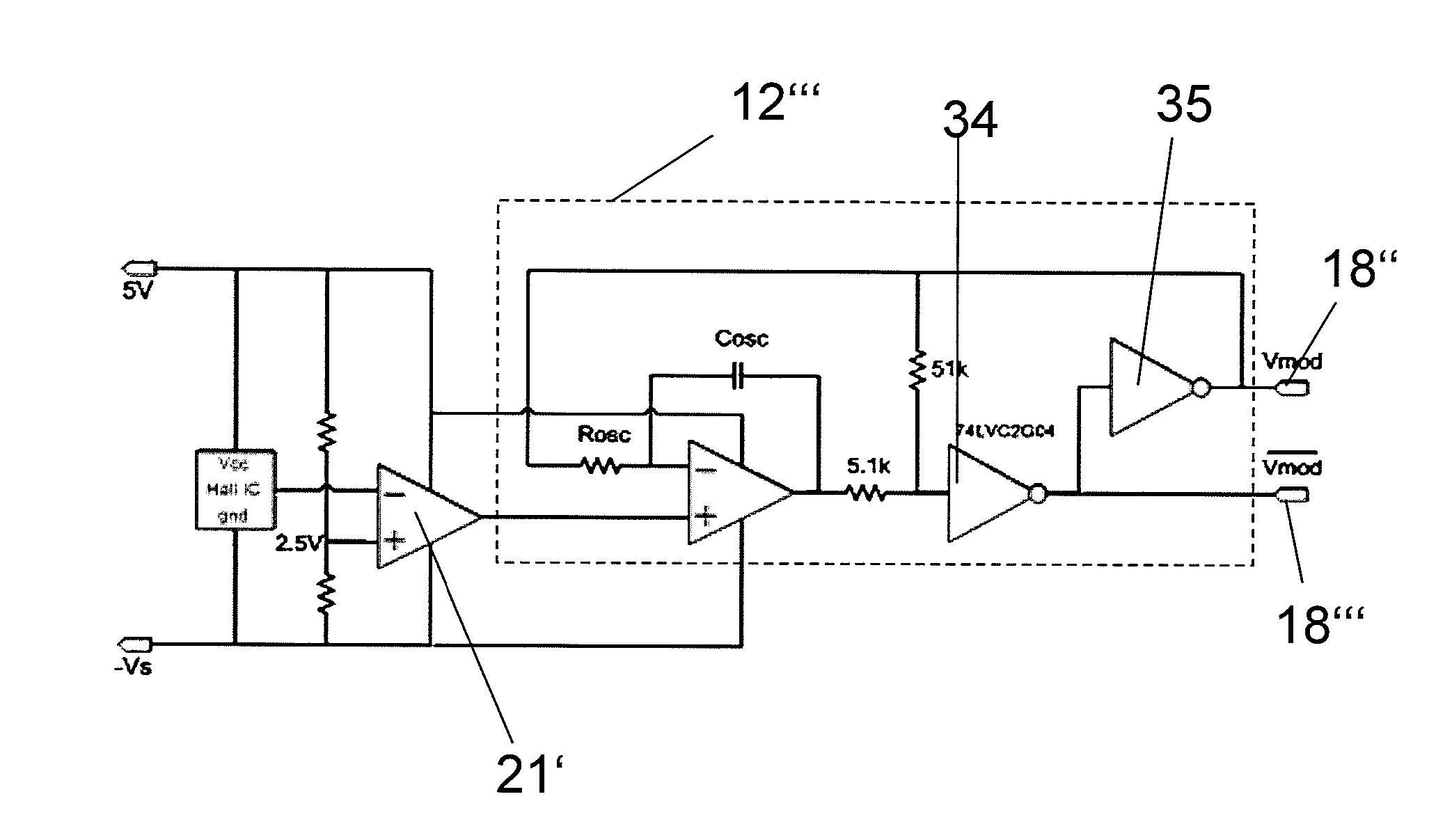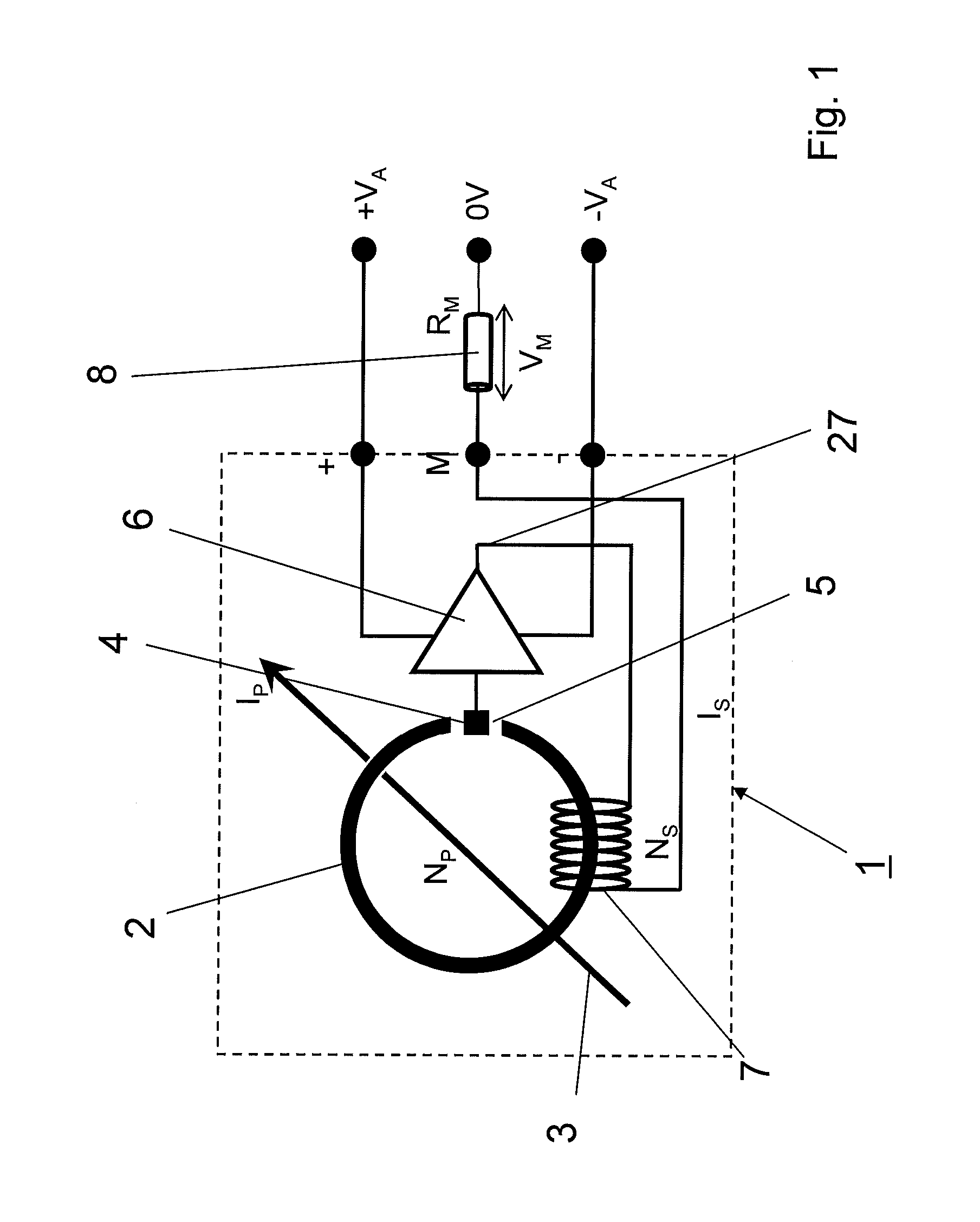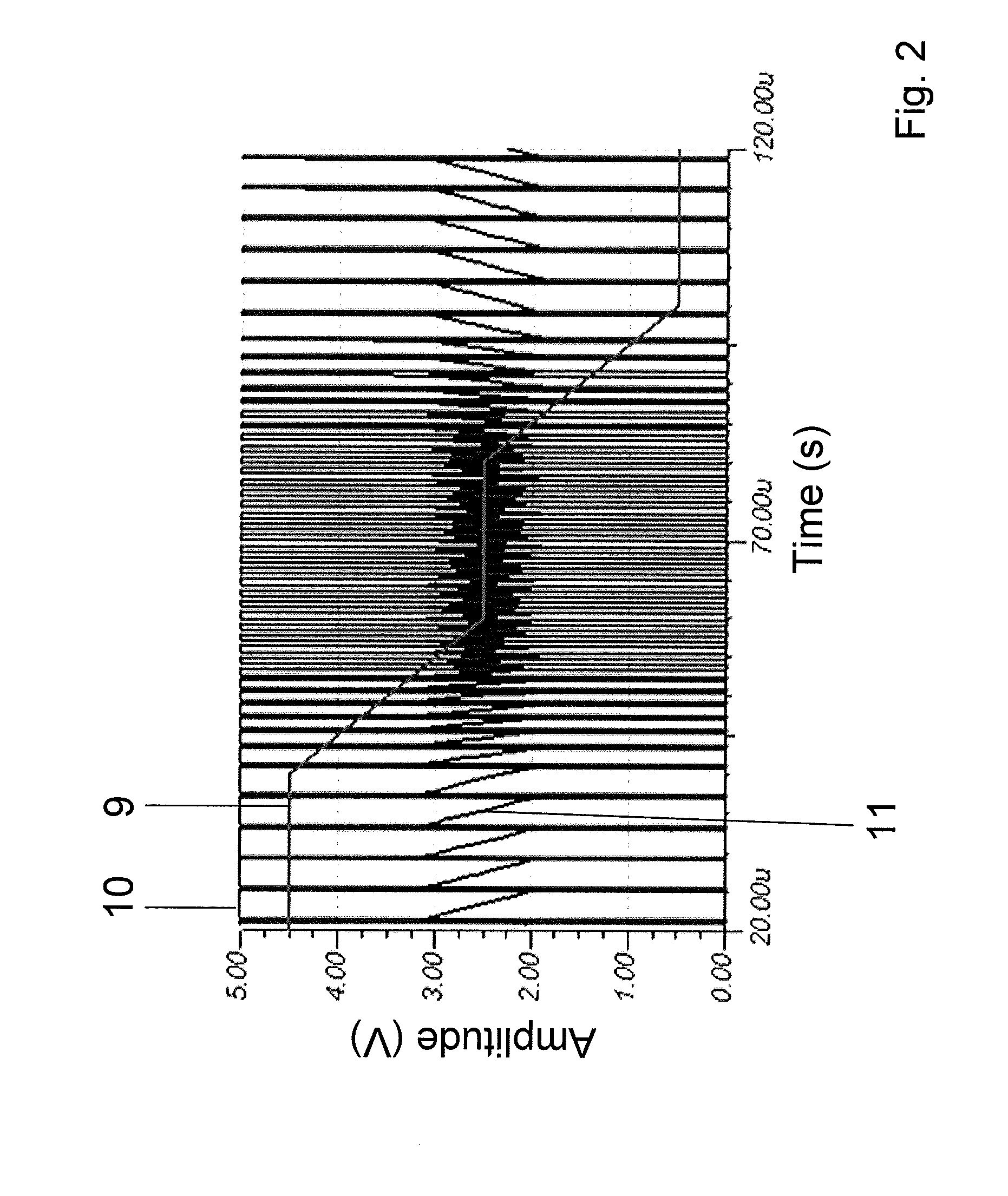Current sensor operating in accordance with the principle of compensation
a current sensor and compensation principle technology, applied in the direction of magnetic measurements, instruments, measurement devices, etc., can solve the problems of reduced reliability or increased design effort in cooling means and components, sensor size and cost, and total loss and supply power demand of sensors
- Summary
- Abstract
- Description
- Claims
- Application Information
AI Technical Summary
Benefits of technology
Problems solved by technology
Method used
Image
Examples
Embodiment Construction
[0020]Exemplary embodiments of the present disclosure reduce semiconductor losses at high currents, and relative ripple value at small currents.
[0021]According to an exemplary embodiment disclosed herein a current sensor operating in accordance with the principle of compensation, has a booster circuit which includes a switched mode amplifier with a pulse width and density modulator that generates a pulse width and density modulated voltage signal, which drives the compensation current through the secondary winding after an appropriate filtering. The switching frequency of such modulator is a function of the compensation current in the sense that the switching frequency is high at small currents and low at high currents.
[0022]According to another exemplary embodiment, the switching frequency with pulse width and density modulation is highest at small output current and lowest at large currents. The switching losses are therefore lowest at large current when the conduction losses are ...
PUM
 Login to View More
Login to View More Abstract
Description
Claims
Application Information
 Login to View More
Login to View More - R&D
- Intellectual Property
- Life Sciences
- Materials
- Tech Scout
- Unparalleled Data Quality
- Higher Quality Content
- 60% Fewer Hallucinations
Browse by: Latest US Patents, China's latest patents, Technical Efficacy Thesaurus, Application Domain, Technology Topic, Popular Technical Reports.
© 2025 PatSnap. All rights reserved.Legal|Privacy policy|Modern Slavery Act Transparency Statement|Sitemap|About US| Contact US: help@patsnap.com



